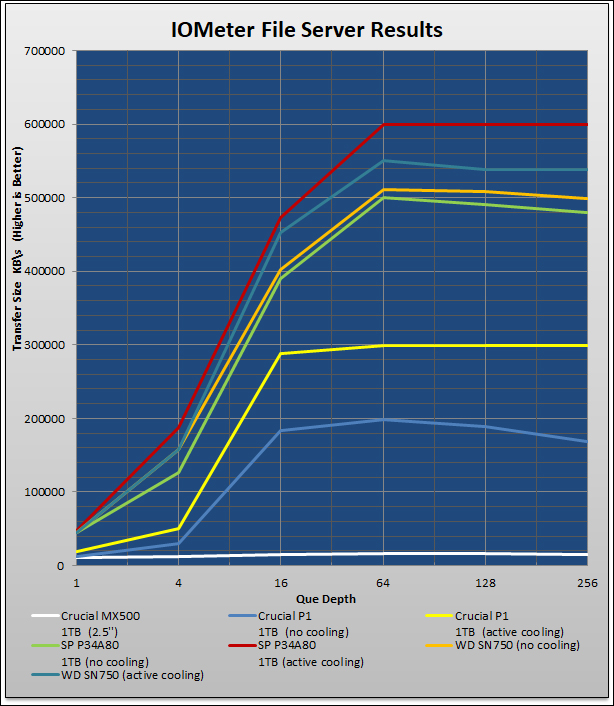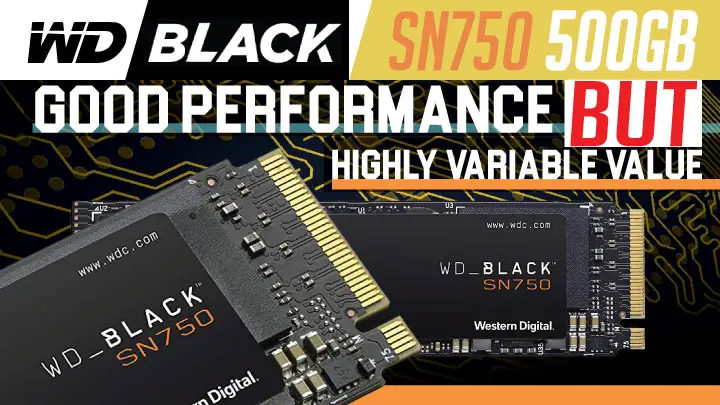To investigate the impact has on overall performance we have used a slightly modified version of our standard IOMeter test. Precisely we have run 8 test runs per device (1,4,16,64,128,256 queue depth) each test having 8 parts, each part lasting 60 min w/ an additional 20 second ramp up. The 6 subparts were set to run 100% random, 50% read 50% write; testing 512b, 4k,8k,16k,32k,64k size chunks of data. When each test is finished IOMeter spits out a report, in that reports each of the 6 subtests are given a score in I/Os per second. The results for the first two test runs/hours are discarded and only the last 6 run reports are averaged.
The three devices in the chart are a sample M.2 SSD installed in open test bed with no cooling and underneath a large (and hot running) video card, the same M.2 SSD installed in a PCIe adapter card w/ heatsink and active cooling via a 120mm fan pushing air over both sides of the M.2 drive. These examples represent the best- and worst-case scenario for any M.2 SSD with typical real-world results most likely falling somewhere in between both extremes.

Considering this is a high performance NVMe solid state drive that relies upon TLC NAND these results are actually pretty decent. The fact of the matter is the controversial choice of using denser NAND ICs actually is not much of an issue thanks to the single side nature of the drive… and the fact we are only using the 500GB capacity variant (expect the 2TB to a lot more variable). Mix in the unique layout that actually helps… and the results are better than what we expected.
By the same token the SN750 series was designed around the idea of having a huge heat sink attached to it… and it shows. We honestly would not opt for the ‘bare bones’ version if we could get the heat sink model. It will be faster, stay faster… and probably last even longer. As such the SN750 series is a bit of a mixed bag when it comes to thermal limiting. It will thermal limit unless you either have proper cooling for it already (via an aftermarket heat sink, a motherboard heat sink, or active cooling) or you spend even more for the ‘proper’ SN750 version. That is a bit of a black mark for this series, a series that could have been even better.










